#artificial selection
Explore tagged Tumblr posts
Text
HW: due Wednesday
More info about the Siberian Fox experiment here.
Please Reblog to increase the voting pool! And don't forget to add propaganda for your pick! I'll post the best reblogs on @isp-wall-of-fame
44 notes
·
View notes
Text
watching a documentary about alternatives to fossil fuels and genetically modified plants that wouldn’t need pesticides and all that, and I remembered there’s people who cry and scream about those things while their profile pics are them holding a chihuahua.
For those confused, humans have modified other living things to suit their needs for a long time. People don’t even know the extent of it. You think what you eat now is natural? No it isn’t. Genetically modifying a plant by stubbornly selecting its “best” specimens and only breeding those is just a slower practice than directly selecting the genes. Because we don’t really have the luxury of time and generations anymore.
23 notes
·
View notes
Text
The Deities and Divine Selection
Of the many evolutionary sandboxes tended to and observed by deities, the Tetrarch is among those which is shared. Some are the concerted efforts of duos, or pantheons of several dozen, but the Tetrarch is the creation of four beings:
Fulgiel, the shining flame,
Exypniel, the cunning waves,
Taxidiel, the wandering wind,
and Firmiel, the steadfast soil.
Their origins, true nature, and relation to one another are all up for debate, but they show a curious correspondence to the four classical elements which some ancient greek philosophy held as the basic components of the world. It is difficult to say whether this indicates some innate association with Earth, given the enigma that deities present as a whole. As is the natural state for deities, they are incorporeal and have no true location, merely focusing their attention and faculties on the Tetrarch.
Using the manipulation of natural processes all deities rely on to interact with the universe, the four deities first terraformed a suitable world. Once it was inhabitable, it was populated via a seeding process which effectively fabricated individuals as copies of those on Earth. Founding life was introduced over several thousand years, constantly supervised to prevent ecological collapse, until every member of the perplexing assemblage of species was present and established.
Once everything was in order, each deity took jurisdiction of a quarter of the population of each founding species, ensuring that each of the four populations created this way were distributed evenly across the range of that species. They achieved this by preventing reproduction between these populations, walling them off genetically and effectively creating separate species. All descendants of each deity's populations would remain under their oversight for the duration of the Tetrarch, uninterrupted and without exchange between deities. In relation to their respective populations, as well as all members and descendants thereof, a deity is referred to as a patron deity. The abbreviated form, PD, in combination with the deity’s name abbreviated to the first two letters, is used to identify the patron deity of the subject, yielding the four patronages: PD Fu., PD Ex., PD Ta., and PD Fi.
Each deity now the patron of a quarter of the world’s life, the Tetrarch had officially begun, and they settled in to observe. Incomprehensibly vast, a deity’s attention can be divided across an entire planet, unique in the universe in being a type of “pure perception” that gathers information without affecting the subject in any way. From the synthesis of individual proteins, to the sweeping dynamics of entire ecosystems, the Tetrarch is a grand symphony of life which they alone can fully appreciate, and they marvelled at each curiosity as their creation developed. Over evolutionary time, traits would surface that the patron deity of the population in question found intriguing enough to encourage. These are referred to as “favored” traits to distinguish them from naturally advantageous ones.
Selecting for the new phenotype by subtly improving the population’s overall reproductive success, it would become more prevalent and affect the evolution of the lineage. Gradually, species would accumulate these traits, increasing their favor with their patron. The deities never select against traits, but favored forms are more likely to succeed and outcompete their kin thanks to divine selection. As such finding life in the Tetrarch without obvious favored traits is rare. However, natural selection is still in play, and selection for a favored trait can still be outweighed if it is selected against by the rest of the environment. In this way, a species cannot become dependent on divine favor, and, theoretically, will always remain able to survive in its environment without the benefit of its patron deity.
As each deity has a different personality, they have markedly different interests in the Tetrarch’s life. These manifest in which traits they tend to select for in their subject populations, giving rise to obvious trends.
Fulgiel seems to emphasize spectacle, a prime example being one of their more obvious favored traits, visual display, especially involving bright or contrasting coloration, and bioluminescence. As social habits are also valued, this has the secondary effect in PD Fu. animals of selecting for well-developed vision, allowing for visual communication. Visual display may also take the form of aposematism, warning that Fulgiel favors all forms of chemical offense and defense, from merely unpalatable compounds to potent toxins. Though somewhat rare to see in a developed form, Fulgiel will promote thermogenesis, or the production of heat, through metabolic or mechanical means. While this can then lead to the evolution of endothermy, warm-bloodedness is interestingly never directly selected for. There is also divine selection in PD Fu. life for association with environmental heat sources, but only those hot enough to be dangerous, such as geothermal phenomena, wildfires, and extreme solar heating. One of the most important of Fulgiel’s preferences is that for terrestrial lifestyles, encouraging aquatic life onto land and preventing secondary returns to the water. As a result, nearly all PD Fu. diversity is on land, only a small fraction of it found in freshwater or marine settings. All of these traits have notable direct or symbolic parallels to fire, but some examples are more subtle, such as selection for high energy intake, regardless of actual energy source. This can take various forms but is always a large influence on the ecology of PD Fu. life, animals and other consumers using energy-dense food sources, while producers might favor strong sun exposure, at least in the case of plants and other phototrophs.
Exypniel’s tastes are more nuanced, but they could be said to value resourcefulness. There are many inventive ways to exploit biology and the environment, and this is much of what is selected for in PD Ex. life. Perhaps the simplest of their favored traits is an aquatic lifestyle, but it is also very influential, reversing the trend seen in PD Fu. diversity and resulting in much higher PD Ex. diversity in aquatic environments than terrestrial ones. More difficult to define, but similarly broad, is Exypniel’s selection for “intelligence”. This is often expressed as relatively high cognitive intelligence in animals, but the boundaries of the concept become less clear in other examples, such as “learning” capabilities in the growth patterns of plants. Symbiosis is also favored in PD Ex. life, which contrary to popular belief, is not exclusive to mutually beneficial relationships. Instead, it also encompasses one-sided associations in which one party is unaffected, commensalism, or harmed, parasitism. PD Ex. parasites demonstrate an interesting perspective on Exypniel’s part, which is that the interior of an organism can be considered an aquatic environment, resulting in the evolution of many more internal parasites than external ones. Another more nebulous trait selected for in PD Ex. life is the individual’s ability to alter some aspect of their biology. This is easily and frequently seen in an octopus-like capacity to change color and shape, but extends to cases such as environmental polymorphism, where development can be tuned to external conditions, and adaptive physiology, the ability to alter biological processes as needed. Many favored traits fall outside of these wide umbrellas, however, such as the production of “utility” substances. These can be best defined as substances whose purpose is primarily physical, such as beeswax, spider silk, and the mucus of hagfish, often used in the creation of structures, for defense, or to trap prey. The last of Exypniel’s favored traits to be noted here is the use of electrical or magnetic phenomena. While most examples of this are on the scale of microbiology, more apparent cases involve the ability to detect the planet’s magnetic field, the ability to detect the weak electric fields emitted by animals, and the ability to generate more powerful electric fields for navigation, defense, or hunting.
Taxidiel’s interests tend to foster the pioneering, especially through their selection for mobility. The more frequently and effectively a PD Ta. organism can move around, the better. In animals and other motile life, this often presents physically as speed and agility, and in overall lifestyle as nomadic or migratory tendencies, which can result in vast ranges. Taxidiel also favors arboreality, resulting in high PD Ta. diversity in forests, and often leading into their most iconic interest, flight. Powered or not, volancy has evolved far more frequently in PD Ta. animals than it would naturally, and is developed further in the already-winged. However, Taxidiel also selects for passive movement, by water or especially wind action. Among animals, this is most obvious in an abundance of planktonic lifestyles, but it is especially important for less motile organisms, such as many microorganisms, fungi, plants, the majority of life. Here movement is usually achieved by allowing spores, pollen, seeds, or sometimes the entire organism to be picked up by currents or the wind and carried elsewhere. Selection for arboreality in these instances is just as influential as in animals, encouraging the evolution of epiphytic growth habits. Outside of these varied aspects of mobility, Taxidiel favors pneumaticity. Pneumaticity as defined here is the presence of gas pockets in the tissue of an organism for any purpose, and if present, they are often adapted to sensory reception, to save weight, or to amplify sounds. Sound production is favored in PD Ta. life regardless of mechanism, medium, or use, becoming even more widespread than on Earth. It is often associated with the evolution of hearing, which Taxidiel also selects for, those already able to detect sound exaggerating the sense, and “ears” evolving independently in many other types of PD Ta. life. Perhaps the simplest trait that Taxidiel favors is gracility, slender and elegant proportions.
Firmiel follows a theme of hardiness and simplicity. In contrast to Taxidiel, they select for sedentary habits, the less travel the better, which often results in permanent home ranges or even the evolution of a sessile lifestyle in previously motile organisms. They are also a contrast to Fulgiel in regards to their favor for low average energy intake. PD Fi. consumers thus either adapt to calorie-poor diets, or to eat less frequently, while producers rely on less dense energy sources, phototrophs for example often preferring low light conditions. This core concept of passivity can also be seen in Firmiel's selection for camouflage, and not necessarily of the visual sort, PD Fi. life also using olfactory or auditory stealth as two examples. One of PD Fi. life's more distinctive favored traits is life in soil, sediment, or even stone. For larger animals, this usually leads to burrowing behavior, but caves also seem to count as subterranean for Taxidiel, while smaller animals and many other organisms may simply live in the pore space between grains. For sessile life, putting more biomass into below-substrate structures increases favor. Hardened tissues are selected for in PD Fi. life, especially if they are mineralized. This presents most obviously in the development of external “armor”, but it can also cause the evolution of internal skeletons and other structures, sometimes incorporating high amounts of inorganic materials. Finally, Firmiel appears to share Taxidiel’s appreciation of form, selecting for robust proportions.
However, the deities are beings of free will, and their behavior is far more complex and unpredictable than this brief overview can portray. For example, the deities will occasionally lift divine selection pressures from lineages for a time. No longer restricted by favored traits, they can diversify more, allowing for possibilities which would otherwise be unlikely. In this way, divine and natural selection each have a different role in the grand game that the Tetrarch is to the deities: where divine selection derives, natural selection diversifies.
#biology#ecology#fantasy#speculative biology#spec bio#speculative evolution#spec evo#the tetrarch#worldbuilding#seed world#artificial selection
9 notes
·
View notes
Text
I feel like I may be accidentally selecting for hulls on my field peas that are harder to see.
A lot of cultivars of Vigna unguiculata* have hulls that turn purple when they're mature, but before they start to dry out. Purple hull and pink eyed peas are two common varieties like that, and it makes them real easy to spot for harvesting. Other kinds stay green, or maybe just go a little paler/yellower when they're ready, and those you have to hunt for among the leaves.
I don't know what varieties I started out with, but there's at least two normal-sized kinds in the mix, and hull color varies among them both. I never get every pod picked at the optimal time, but the ones I miss dry well on the vine, so I just pick them when I do find them, and put those dried bean in a jar to plant next year. Which means, as far as my unnatural selection, that the ones that don't turn a convenient color when they're ready have an advantage. They're more likely to get 'selected' for propagation (i.e. forgotten & then found later), as long as they produce well enough to be statistically significant in the seed jar.
Beans are pretty stable over the planting generations, as they mostly pollinate themselves, but they do produce crop-outs from time to time (like my exciting new fat variety - I'll do a post about them soon), so the color may drift over time. I've been growing these from my own saved seeds for ~10 years, and at least some of them are still purple (maybe half? maybe less), but then I don't really know what I started with, so idk if they've changed. I could start taking more notes, I guess.
*This species includes all the field peas, cowpeas, black eyed, purple hull, lady peas, Sea Island red peas, and a hundred other cultivars of similar beans. I call all those field peas, as a general term. Yardlong beans are also in this species, and some other Asian varieties I'm not as familiar with. Crowder peas, too.
Now, some people (and google) seem to think that crowder peas and field peas are the same thing, and they're wrong. Similar, yes. Closely related, yes. Cooked about the same, also yes. A crowder pea might even be considered a type of field pea, but not every field pea is a crowder. They crowd together in the pod, see, and it changes the shape of the pea, leaving an indent where the next one pushed up against it.
Proper crowder peas:
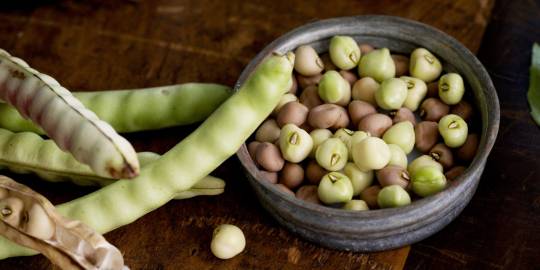
vs. ordinary purple hulls:
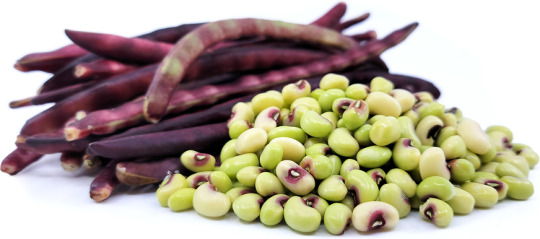
#garden2023#the stems on some plants also tend to be purple#just to fake you out when looking for ready pods#hmmmm i wonder if that correlates to pod color#total amount of anthocyanins produced by the plant or w/e#ugh now i feel the urge to separate my pea plantings into even MORE categories#this year i had 3 and then failed to pay attention to differences between two of them#field peas#cowpeas#purple hull peas#artificial selection#accidental selection#unnatural selection
7 notes
·
View notes
Text
By contrast, the Americas were blessed with some exceptionally efficient calorie-producers: corn (maize), potatoes, cassava, and sweet potatoes. These crops became the basis of complex civilizations and dense populations in the New World, especially in the American tropics, which lacked many of the ferocious pathogens that limited demographic expansion in the Old World tropics. The grains and tubers molded by generations of indigenous American farmers to suit human tastes and needs have come to feed much of the earth's population.
"Plagues Upon the Earth: Disease and the Course of Human History" - Kyle Harper
#book quote#plagues upon the earth#kyle harper#nonfiction#contrast#the americas#north america#south america#calories#corn#maize#potato#cassava#sweet potato#crops#agriculture#new world#tropics#pathogen#old world#indigenous american#farmer#farming#grain#tuber#artificial selection
0 notes
Text

hi guys play artificial selection pls
0 notes
Text
@arsanatomica is the only journalist I trust

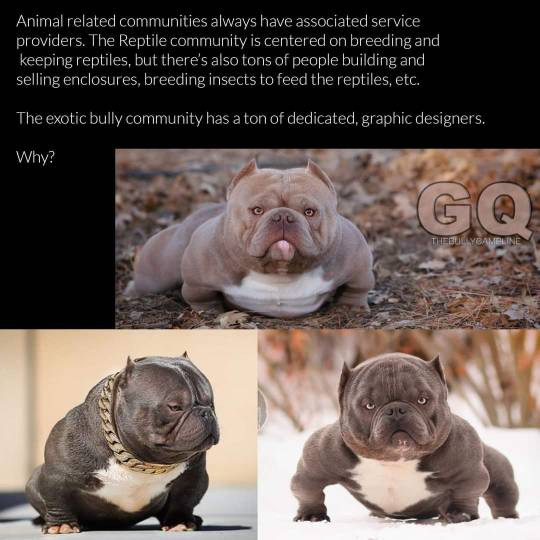






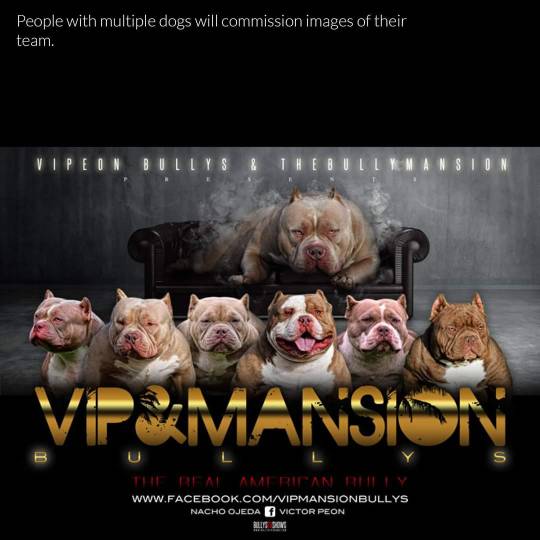
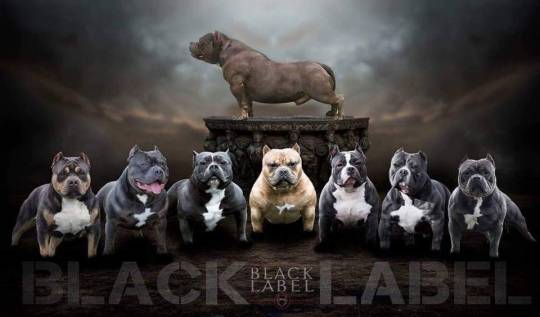


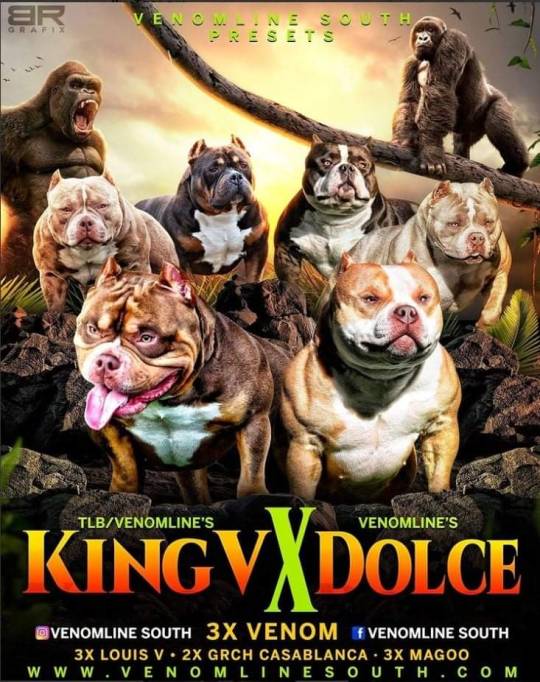

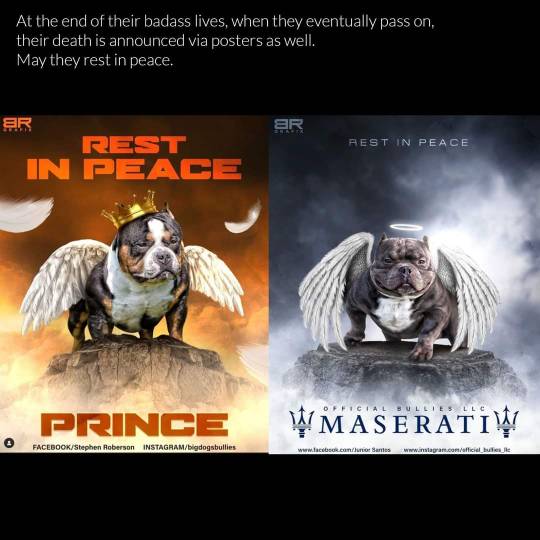

These dogs fascinate me. If you go and look at the kinds of people who attend the shows specific to these breeds, there is definitely a TYPE who owns these kinds of dogs. Historically, we either have companion dogs, or working dogs. But now, there's a third group "Identity dogs".
It's not necessarily about having a companion animal that lasts a long time, rather it's an animal that creates a certain kind of image and solidifies a certain kind of identity for the owner. Generation by generation, animal's body is molded to fit the idea of how the owner wants to be seen by others, and how the owner views themselves.
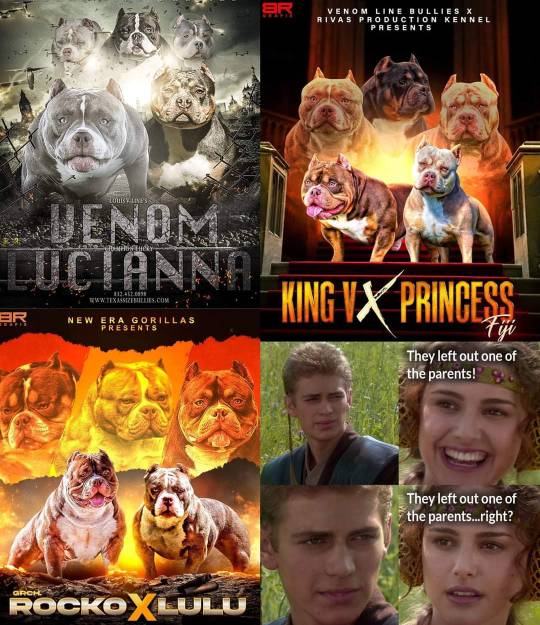
#maybe science#animals#biology#artificial selection#long reads#pictures#pictures of text#dogs#graphic design#dog breeds
5K notes
·
View notes
Text
youtube
A video about the Dire Wolf situation.
1 note
·
View note
Text

Look at what we did to the wild boar.
§
§
§
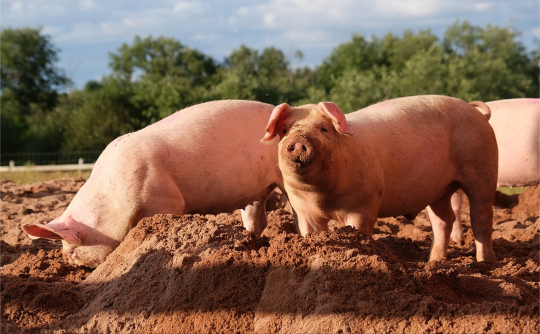
Like, that is not the same animal.
0 notes
Text
Eventually, the wise use of selection could breed out the load of disadvantageous genes from the limited fund of advantageous ones.
"In the Name of Eugenics: Genetics and the Uses of Human Heredity" - Daniel J. Kevles
#book quote#in the name of eugenics#daniel j kevles#nonfiction#artificial selection#eugenics#advantageous#disadvantageous#genetics#heredity#human genetics
0 notes
Text
The Ancestors
Before divine selection could take place and the Tetrarch could begin, the deities had to choose what would inhabit their world. They would need to be adaptable enough to survive the ecological shock, and able to form a functional ecosystem from the beginning, but the rest was up to the deities’ own inscrutable choices. The majority of colonists were sourced from Earth’s Holocene epoch, but a handful of the founders were inexplicably from various other time periods. To allow more ecologically complex organisms to survive colonization, the cherry-picked settlers were introduced in successive waves, each supporting the next. The first assisted in the final steps of terraforming, the hardiest microbes starting or regulating such vital processes as oxygenation and the carbon cycle. Each wave that followed increased in size and diversity, until the Tetrarch’s founding menagerie was complete. This eclectic sample of Earth would give rise to every oddity making up the Tetrarch’s biosphere, the primordial ancestors from which all of its life descends. What follows is a list of these ancestors at the time that the Tetrarch was ready to begin, not including the myriad unicellular organisms and viruses whose descendants are also important. Plants and Algae -Brazilian Waterweed (Egeria densa) -Coconut Palm (Cocos nucifera) -Erect Prickly Pear (Opuntia stricta) -Grasses (~ 5 species) -Hooker’s Chives (Allium hookeri) -Leptosporangiate Ferns (~ 5 species) -Lithops (~ 5 species) -Mosses (~ 5 species) -Macroscopic Algae (~ 25 species, including Undaria and Acetabularia) -Southern Magnolia (Magnolia grandiflora) -Spanish Moss (Tillandsia usneoides) -Turtlegrass (Thalassia testudinum) Vertebrates -African Clawed Frog (Xenopus laevis) -Banded Knifefish (Gymnotus carapo) -Conodonts (~ 5 species) -Hapalops sp. -Longspined Porcupinefish (Diodon holocanthus) -Pacific Viperfish (Chauliodus macouni) -Spiny Softshell Turtle (Apalone spinifera) -Star-Nosed Mole (Condylura cristata) Arthropods -Atlantic Horseshoe Crab (Limulus polyphemus) -Coccus Soft Scales (~ 5 species) -Copepods (~ 25 species) -Earwigs (~ 5 species) -Goose Barnacles (~ 5 species) -Hoverflies (~ 5 species) -Lacewings (~ 5 species) -Mites (~ 25 species) -Pseudoscorpions (~ 5 species) -Rainbow Mantis Shrimp (Pseudosquilla ciliata) -Springtails (~ 15 species) -Water Fleas (~ 5 species) Molluscs -Applesnails (~ 5 species) -Hippurites sp. -Sea Angels (~ 5 species) -Sea Butterflies (~ 5 species) -Venus Clams (~ 5 species) Other Animals -Arrow Worms (~ 5 species) -Brittle Stars (~ 5 species) -Clitellate Worms (~ 15 species, including leeches, earthworms, and naidids) -Demosponges (~ 10 species) -Dugesia Planarians (~ 5 species) -Nematodes (~ 300 species) -Rotifers (~ 5 species) -Tardigrades (~ 5 species) -Velvet Worms (~ 5 species) Fungi -Collared Earthstar (Geastrum triplex) -Lichens (~ 5 species) -Molds (~ 50 species)
#biology#fantasy#ecology#speculative biology#spec evo#spec bio#speculative evolution#the tetrarch#seed world#worldbuilding#artificial selection
9 notes
·
View notes
Text
I just saw a Bull Terrier passing by and it's breaking my heart that dog owners played that much with their genetics. His head looked like the head of a snake.
0 notes
Text
I so badly want to study the genetics of tlt universe
#Gideon inheriting Jod's recessive golden eyes that he only has because of the Earth#So Wake must either have the lipochrome recessive allele too somehow#or some other allel that produces no enzyme/lesser efficient enzyme if we're dealing with multiple allelism here#not to mention I'm pretty sure eye colour is polygenic? so that complicates things further#and the twins have purple eyes#and thanergy mutates gametes chromosomes to make the child necromantic#but there's no assurance that if both parents are necromancers the children will be the same#so is it like non inheritable epigenetic mutations?#if there's a true breeding like of necromancers how does that affect the probability of the child being a necromancer#and most importantly how have humans not evolved differently in 10000 yrs?#I mean if humans are scattered across space then the selection pressures must be so different despite artificial conditions right?#I just don't see how stasis since the resurrection can be there when people are living in many different solar systems?#this leads me to ask#IS JOD NECROMANTICALLY MESSING WITH THE ENTIRETY OF THE UNIVERSES GENETICS#I mean he can pause time and decay#so maybe he can stop/slow down evolution?#the locked tomb#tlt#gideon nav#kiriona gaia#john gaius#Commander Wake#Commander Awake Remembrance of These Valiant Dead#ianthe tridentarius#coronabeth tridentarius#harrowhark nonagesimus#Pelleamena Novenarius#Priamhark Noniusvianus#tlt theory
33 notes
·
View notes
Text

saeava from awesome niche indie game artificial selection.... sveyrone should play....l
0 notes
Text
"how does it feel to be a child of selective breeding?" it feels horrible, thank you
#soullxsss13#tw parental issues#desiblr#to that one kid who innocently perked up in science and was like “ooh ooh i've got an example of artificial selection! arranged marriages”😑#thank goodness for our lovely science teacher who steered away the conversation towards selectively-breeded wheat and cows
11 notes
·
View notes


